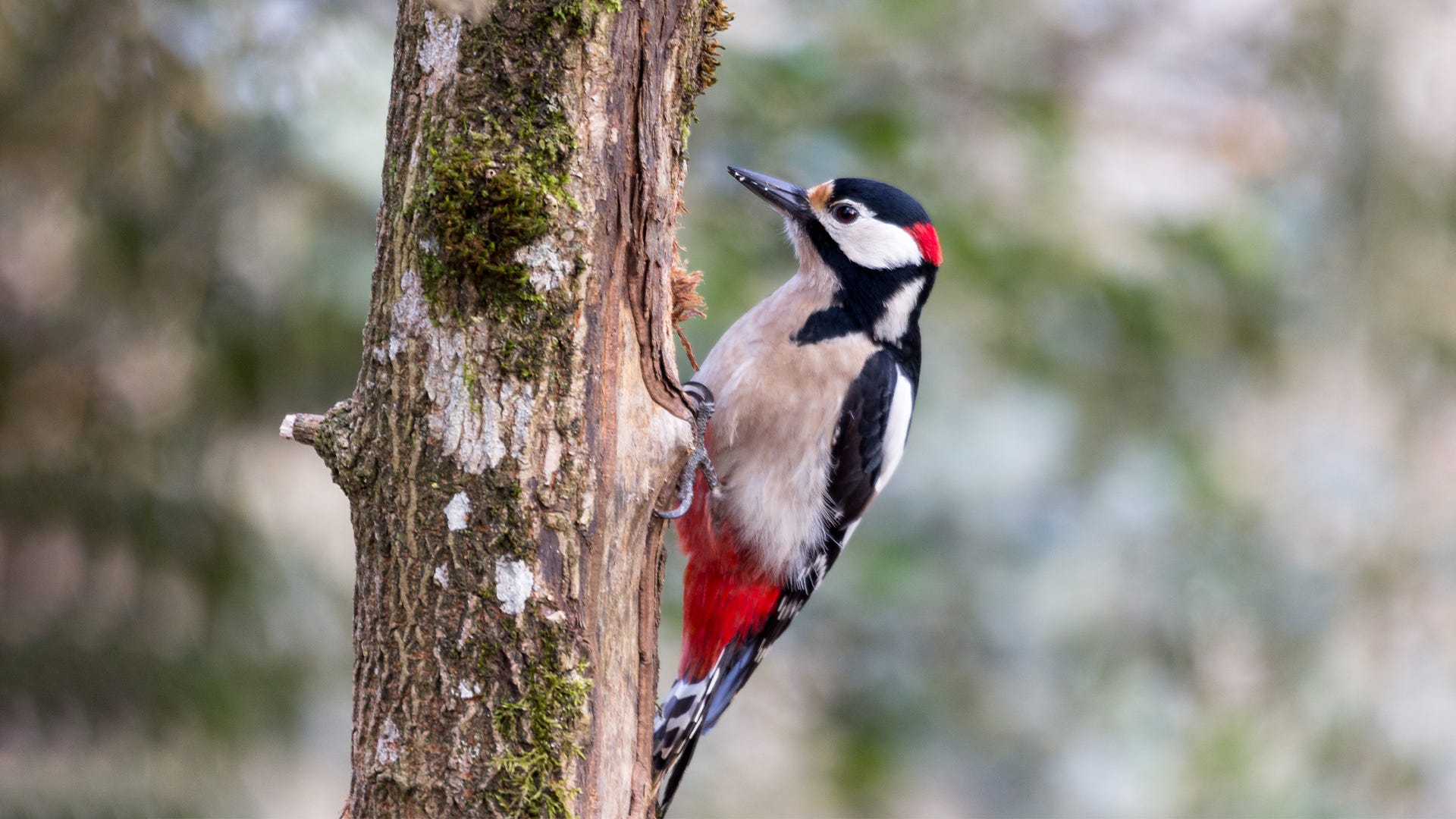Woodpeckers in Florida: Recognition Tips and Environment Preferences
Woodpeckers in Florida: Recognition Tips and Environment Preferences
Blog Article
Woodpeckers Unleashed: Exploring the Marvels of These Knowledgeable Tree Climbers
Woodpeckers, with their distinctive markings and balanced drumming echoing through wooded locations, hold a distinct location in the avian world - Woodpeckers in Florida. As we dig into the elaborate details of woodpeckers' nesting behaviors, feeding strategies, and the ongoing conservation initiatives to shield these amazing birds, a much deeper recognition for their location in nature unravels.
Makeup and Adaptations
When examining the makeup and adaptations of woodpeckers, one can observe exceptional functions that allow these birds to prosper in their specialized ecological specific niche. Woodpeckers are equipped with a suite of special physiological characteristics that help them in their woodpecking behavior. One of one of the most famous functions is their strong, chisel-like beak, which is specialized for exploration right into timber to reveal insects or create nesting cavities. This beak is supported by solid neck muscle mass and a highly developed skull structure that functions as a shock absorber, allowing woodpeckers to consistently eat trees without creating brain injury. Furthermore, woodpeckers have zygodactyl feet, with two toes facing ahead and 2 facing backwards, giving a company grip on tree trunks while they search for food or drum for interaction.
Moreover, woodpeckers have a special tongue framework that is long, barbed, and sticky, enabling them to remove bugs from crevices in wood. This specialized adaptation permits woodpeckers to make use of a food resource that is hard to reach to lots of various other bird species. Generally, the composition and adaptations of woodpeckers display the remarkable evolutionary remedies that have allowed these birds to thrive in their arboreal environment.
Drumming Habits
Having discovered the makeup and adjustments of woodpeckers, the emphasis currently changes to recognizing their drumming behavior, a distinctive element of their communication and territorial display screens. Drumming is an important type of communication among woodpeckers, serving several purposes such as establishing areas, bring in friends, and signaling alarm system. Each woodpecker varieties has a distinct drumming pattern that assists people acknowledge participants of their own types and distinguish them from rivals or killers.
Woodpeckers create drumming audios by quickly pecking on resonant surfaces such as dead trees, energy posts, and even metal objects, developing a collection of rhythmic beats. The intensity and speed of drumming can differ based on the objective; for example, a quick drumming series might symbolize hostility towards burglars, while a slower and softer drumming pattern can indicate courtship (Woodpeckers in Florida). Furthermore, woodpeckers might readjust the regularity and period of their drumming to communicate details messages properly
Nesting Habits
Exploring the nesting behaviors of woodpeckers discloses remarkable understandings into their reproductive actions and environment choices. Woodpeckers are recognized for their one-of-a-kind nesting choices, commonly digging deep into tooth cavities in trees to create sheltered spaces for elevating their young. These dental caries offer not just my site as a nesting website yet also as a safe haven from killers and harsh weather.
Woodpeckers exhibit a high level of fidelity to their nesting sites, usually returning to the very same location every year. This see this website actions highlights the value of ideal habitat schedule for their reproductive success. The selection of a nesting website is crucial for woodpeckers, with aspects such as tree varieties, elevation, and decay stage playing significant functions in their decision-making process.
Interestingly, some woodpecker species are recognized to dig deep into numerous cavities within their area, giving themselves with different nesting alternatives. This approach might work as a type of insurance against potential hazards or disturbances to their primary nesting website.

Feeding Methods
One of the most unique feeding actions of woodpeckers is drumming, which entails rapid pecking on trees to uncover insects below the bark. Woodpeckers are also known to dig deep into dental caries in trees to access covert insect larvae or sap. Some varieties, like the acorn woodpecker, shop nuts in particularly created holes called granaries.
Preservation Efforts
In the middle of the intricate feeding methods displayed by woodpeckers, the conservation initiatives targeted at guarding these remarkable birds play an essential role in preserving their habitats and populaces. Woodpeckers deal with different dangers to their survival, consisting of habitat loss as a result of logging, climate adjustment altering their ecological communities, and collisions with synthetic structures such as top article buildings and lorries - Woodpeckers in Florida. Preservationists are proactively working to address these difficulties and ensure the long-term health of woodpecker types

Education and public understanding projects are additionally crucial elements of woodpecker preservation efforts. By elevating understanding regarding the significance of these birds in keeping healthy forest ecosystems, guardians can amass assistance for environment preservation efforts and advertise responsible land administration methods. Through collective efforts between scientists, policymakers, and regional communities, we can function together to protect a future where woodpeckers thrive in their natural environments.
Final Thought

Report this page